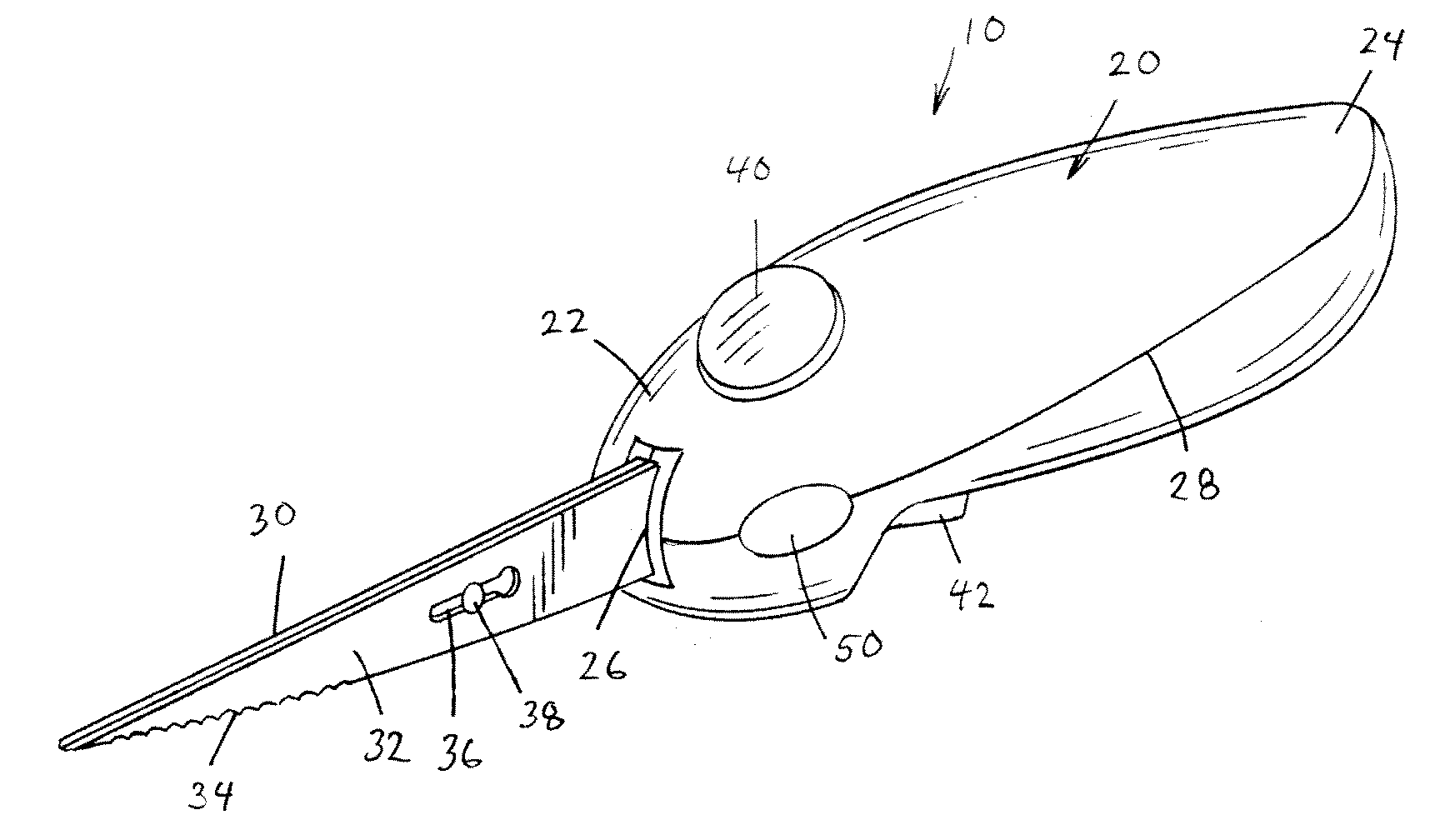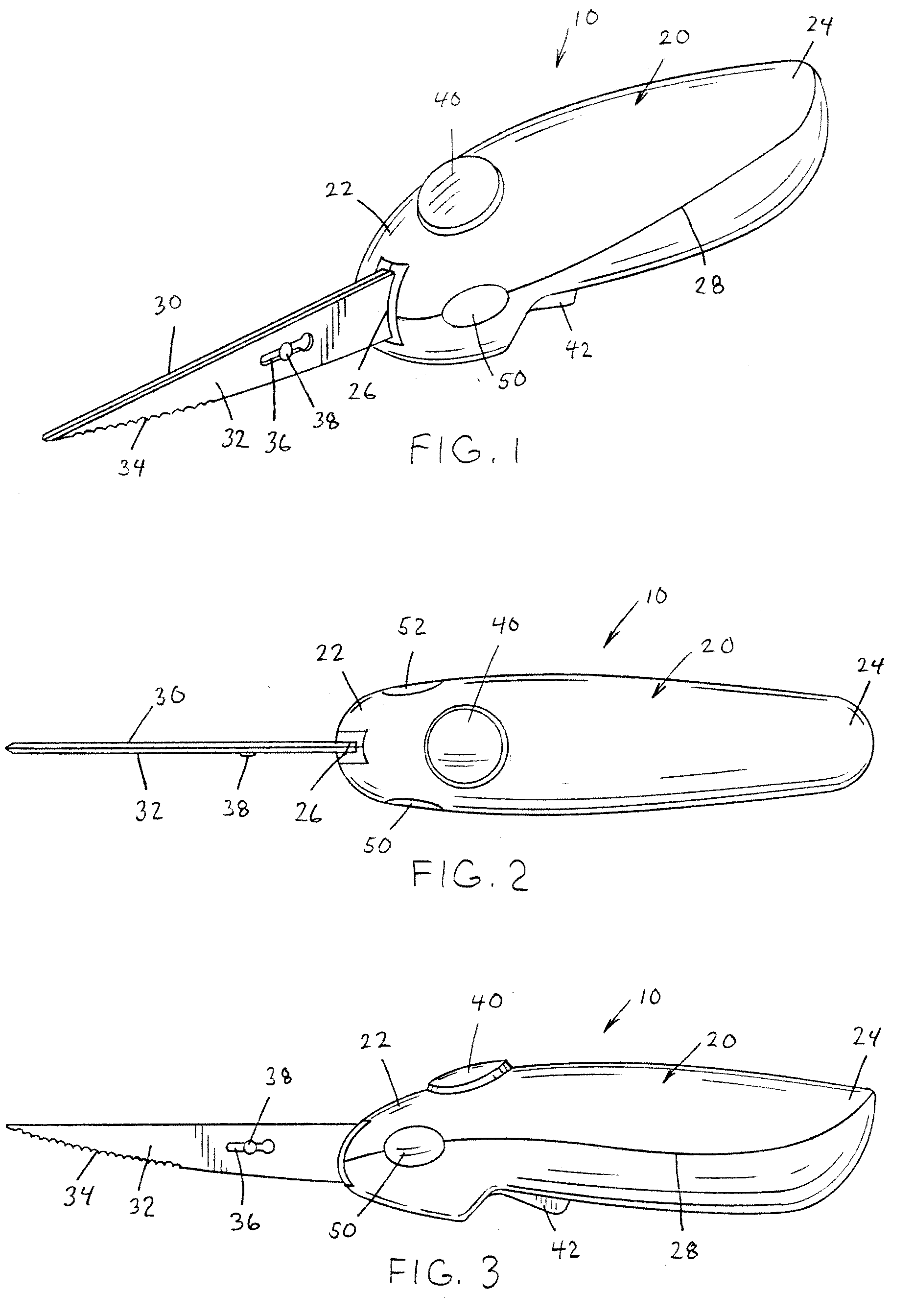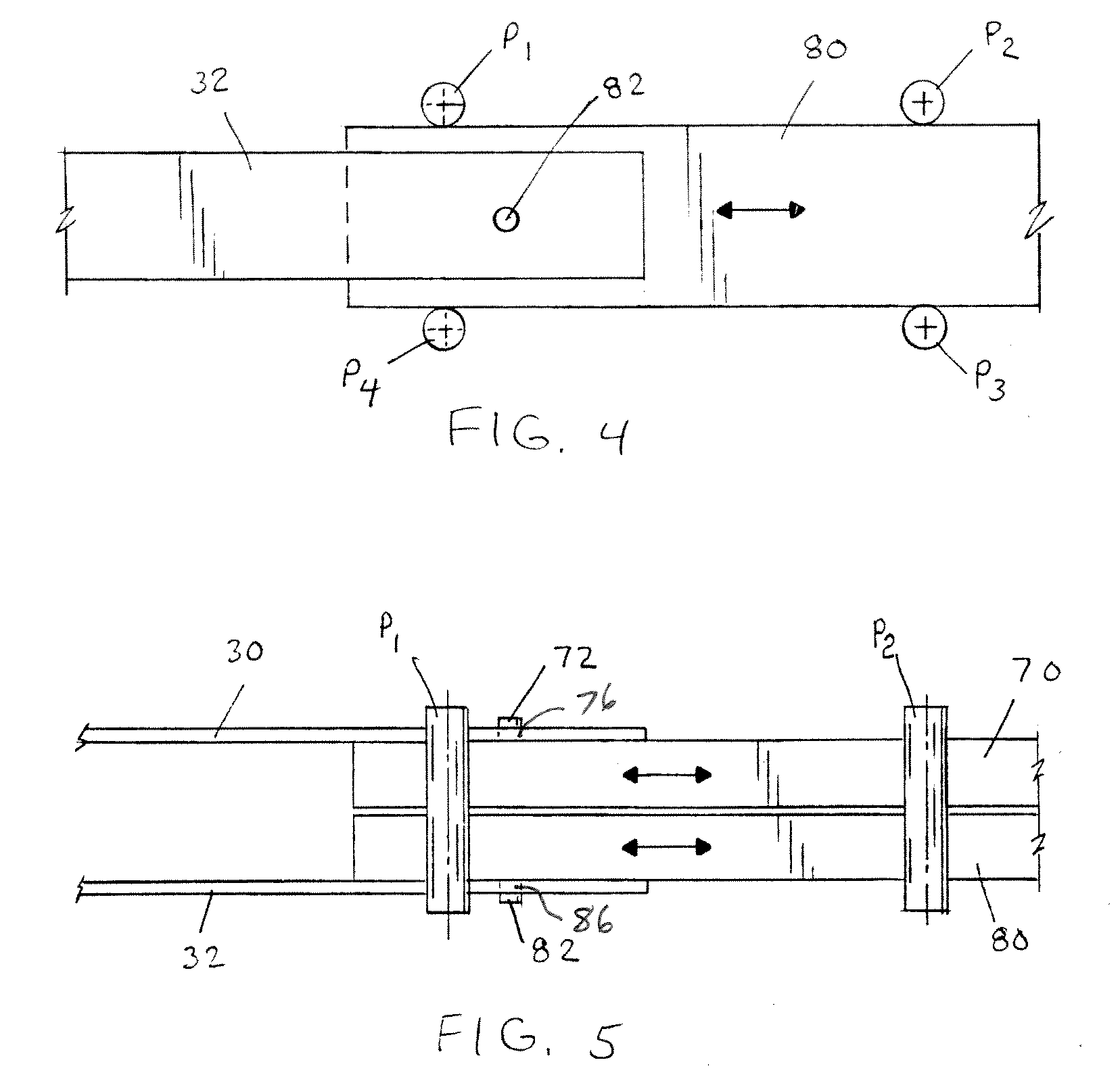Battery powered knife
a battery-operated knife and battery technology, applied in the direction of metal working apparatus, etc., can solve the problems of inability to be exposed to water or other liquids, blades that cannot move fast relative to one another, and expensive or complex battery systems
- Summary
- Abstract
- Description
- Claims
- Application Information
AI Technical Summary
Benefits of technology
Problems solved by technology
Method used
Image
Examples
Embodiment Construction
[0029]Referring now to the drawings wherein the showings are for the purpose of illustrating a preferred embodiment of the invention only and not for the purpose of limiting same, FIGS. 1-3 illustrate one non-limiting battery powered knife 10 in accordance with the present invention. The knife 10 includes a body or handle 20. The shape of the handle is non-limiting. Generally the shape of the handle has an ergonomic configuration that enables the handle to be easily gripped and maneuvered when using the knife; however, this is not required. The handle is generally made of light weight and durable materials (e.g., plastic, composite material, aluminum, etc.); however, this is not required. The handle has a front portion 22 and a rear portion 24. The handle can be formed of two pieces of material which come together at seal 28; however, this is not required. The front portion of the handle includes a blade opening 26 that is designed to received knife blades 30, 32. The knife blades 3...
PUM
 Login to View More
Login to View More Abstract
Description
Claims
Application Information
 Login to View More
Login to View More - R&D
- Intellectual Property
- Life Sciences
- Materials
- Tech Scout
- Unparalleled Data Quality
- Higher Quality Content
- 60% Fewer Hallucinations
Browse by: Latest US Patents, China's latest patents, Technical Efficacy Thesaurus, Application Domain, Technology Topic, Popular Technical Reports.
© 2025 PatSnap. All rights reserved.Legal|Privacy policy|Modern Slavery Act Transparency Statement|Sitemap|About US| Contact US: help@patsnap.com



